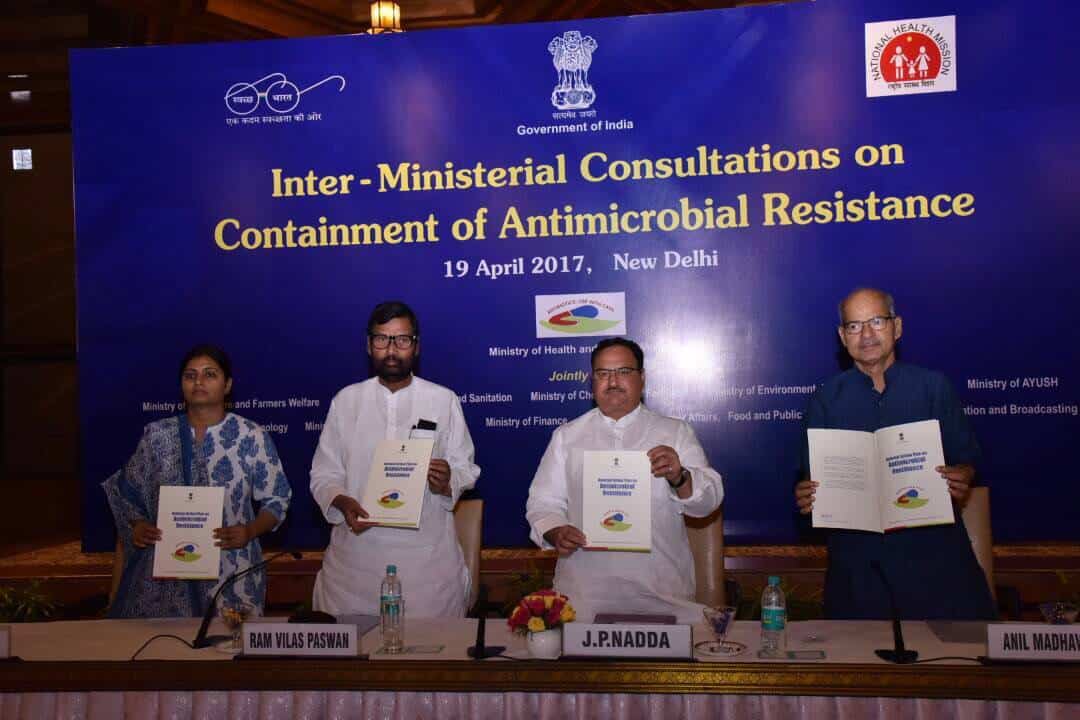April 27, 2017

India launches national action plan to contain antimicrobial resistance and commits to multi-sectoral action.
Last week, India made headlines when the government announced the publication of a national action plan for the containment of AMR. The plan is a major step forward in ensuring sustainable action on AMR in India, bridging the gaps between human, animal, and environmental health and ensuring a One Health approach. Twelve ministries came together to commit to multisectoral action in the accompanying “Delhi Declaration on Antimicrobial Resistance.”
India’s nation action plan comes as part of a broader effort by three United Nations organizations: the World Health Organization (WHO), Food and Agricultural Organization (FAO) and the World Organization for Animal Health (OIE), to support countries in establishing plans for AMR prevention and control. At the World Health Assembly held in May 2015, ministers of health from countries around the world committed to establishing national action plans on antimicrobial resistance by the 70th World Health Assembly, taking place in May 2017.
Many high-income countries had already established national action plans and maintain surveillance systems to track patterns of antibiotic resistance and use. However, policy and surveillance are still largely lacking in low- and middle-income countries, where AMR poses an even greater threat due to high burdens of infectious diseases, weaker health systems, and sub-standard medicines.
Take India, for example. Rates of antimicrobial resistance in India have increased for many bug-drug combinations in recent years. CDDEP’s ResistanceMap shows an alarming increase in resistance to carbapenems, a last-resort antibiotic, in Klebsiella pneumoniae infections, from 24 percent in 2008 to 57 percent in 2014.
Key initiatives under India’s new national action plan aim to reverse these trends. They include finalizing a national infection control policy; setting up a national surveillance system (10 labs are currently conducting surveillance); and setting up governance structures for AMR including an intersectoral coordination committee, a technical advisory group and a core working group on AMR. The National Centre for Disease Control (NCDC) has been appointed as the focal point for implementation and coordination of the AMR programme.
Other priorities include improving awareness among policy makers and community, training health staff down to the district level, establishing a monitoring system to assess antimicrobial consumption in humans, animals and the food sector, improving infection control practices in hospitals, and promoting investments in research and innovations.
While many of these priorities echo the Global Action Plan, India added a unique sixth priority: to be a leader in AMR. This indicates a promising level of commitment by the government not only to tackle AMR, but to show the way forward in the region and worldwide.
The next step will be ensuring that the action plan is implemented and progress measured. Efforts such as the Global Antibiotic Resistance Partnership (GARP), CARA: the Conscience of Antimicrobial Resistance Accountability and the newly appointed Interagency Coordination Group on Antimicrobial Resistance have been established to support countries as they move forward in this new phase of AMR control.
Timeline of AMR policy activities in India
2009: Establishment of the Global Antibiotic Resistance Partnership (GARP)-India
2010: Establishment of the National Task Force on AMR Containment
2011: Publication of the situation analysis on AMR
2011: Publication of a national policy on AMR containment
2011: Signatory to the Jaipur Declaration on antimicrobial resistance
2012-2017: Establishment of the National Programme on Containment of Antimicrobial Resistance under the Twelfth Five Year Plan (2012-17) and
2016: Development of national treatment guidelines for antimicrobial use in infectious diseases
2017: Publication of the National Action Plan for AMR












